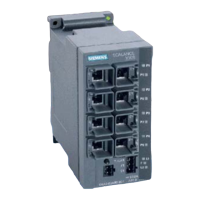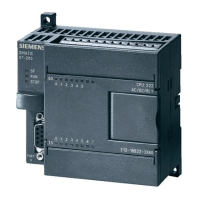Using the Keypad Designer to Create a Custom Faceplate for your Text Display (TD) Device
3.4 Adding Buttons to the Keypad
Text Display (TD) User Manual
50 System Manual, 08/2008, A5E00765548-03
Table 3- 1 Files Used by the Keypad Designer
File Type Extension Description
TD file
Open, Save,
Save As
*.td2 (TD 200C)
*.td1 (TD 100C)
*.td4 (TD400C)
Create the Keypad project file that stores the
configuration data for the custom-designed keypad
(used by the Text Display wizard)
Button Template
Export
*.bmp Export the layout of the buttons on the keypad to a
graphics application by selecting a file
Panel Image
Import
*.bmp Import the finished bitmap of the faceplate from the
graphics application by selecting a file
Panel Image
Export (Optional)
*.bmp Export the finished faceplate to a word-processing
application for printing multiple copies of the faceplate
3.4 Adding Buttons to the Keypad
Adding Buttons to the Keypad
The TD 100C and the TD 200C allow you relative freedom when designing your keypad.
With the TD400C, the position and size of the buttons are fixed. You cannot add, remove, or
change the TD400C buttons.
On the TD keypad you can configure up to 20 buttons for the TD 200C, up to 14 buttons for
the TD 100C, and up to 15 buttons for the TD400C.
● You can vary the size and the location of the buttons (TD 100C and TD 200C only)
● You can define the functionality for each button.
The Keypad Designer provides a grid that aligns the location of the buttons with the physical
keypad of the TD device.
ᅛ
.H\SDG'HVLJQHU
&UHDWHWKHOD\RXWIRUWKHNH\SDG
Ⴠ$GGWKHEXWWRQVWRWKHNH\SDGJULG
Ⴠ$GMXVWWKHVL]HDQGORFDWLRQRIWKH
EXWWRQV
Figure 3-6 Adding the Button to the TD 100C and TD 200C Keypad
Tip
Typically, your keypad design should always include buttons with the following functions:
Enter, Escape, Up Arrow, and Down Arrow. These functions allow you to access the pre-
configured menus and functions of the TD device.

